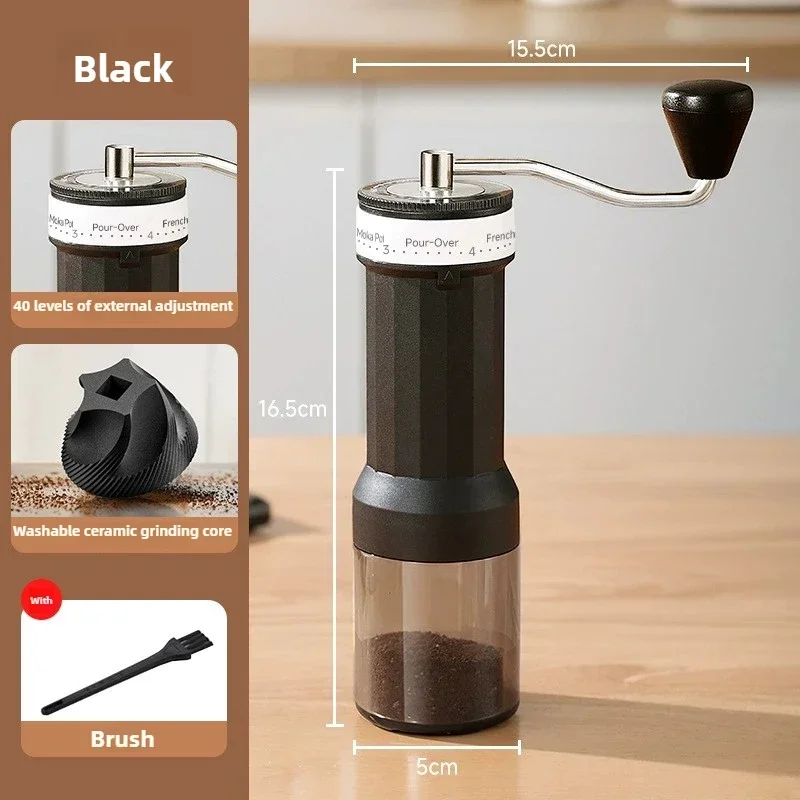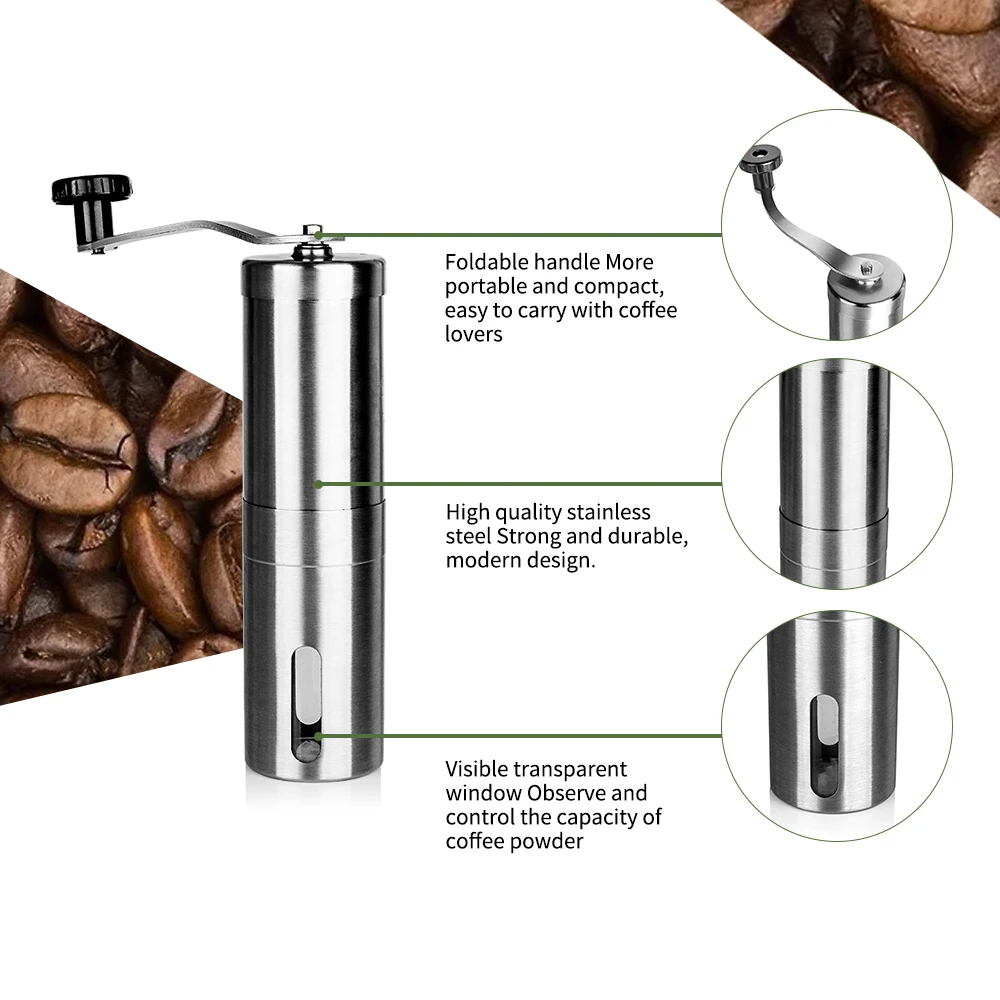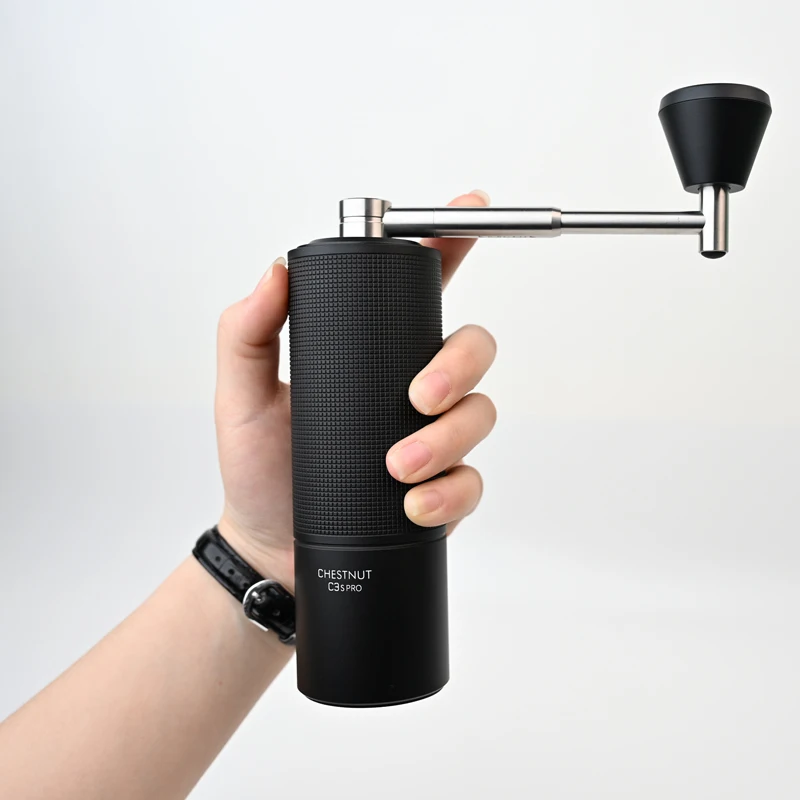Introduction: The Quest for Perfect Travel Coffee with AeroPress
The AeroPress has revolutionized how coffee enthusiasts enjoy their favorite brew while traveling. This compact coffee maker combines simplicity with incredible versatility, making it the perfect companion for adventures far from home. However, even the most dedicated coffee lovers face a significant challenge on the road: maintaining consistent coffee grounds.
Why does this matter so much? Because inconsistent coffee grounds lead directly to unpredictable extraction—where water pulls flavors from your coffee beans unevenly. One sip might taste bitter and overwhelming, the next weak and sour. The unique pressure-brewing method of the AeroPress makes it particularly sensitive to grind consistency, amplifying both the rewards of getting it right and the disappointment when things go wrong.
This guide aims to help you achieve café-quality AeroPress coffee anywhere your travels take you. We’ll explore how to select the right grinder for your needs, master techniques that maximize consistency, and troubleshoot common issues that arise during travel brewing. Understanding the fundamentals of mastering espresso precision grind settings can provide valuable context for achieving similar consistency with your AeroPress setup.
The Science Behind Coffee Extraction and Grind Consistency
When hot water meets coffee grounds, it doesn’t extract all flavor compounds simultaneously. Instead, it follows a predictable pattern: first come the fruity acids, then the balanced sweetness, and finally the bitter compounds. This sequence explains why grind consistency matters so deeply.
Understanding Even vs. Uneven Extraction
When your grounds are uniform in size, water extracts flavors evenly across all particles. But inconsistent grounds create problems:
- Too many fine particles: These tiny fragments over-extract quickly, releasing excessive bitterness and astringency
- Too many coarse chunks: These under-extract, resulting in sour, weak flavors that lack depth
The AeroPress brewing method combines immersion (coffee steeping in water) with pressure (when you press the plunger). This dual-action approach accelerates extraction compared to other methods, making it even more sensitive to grind consistency issues.
Travel conditions compound these challenges. Varying water quality, altitude changes (which affect boiling temperature), and time constraints all impact extraction. When these variables are already working against you, having consistent grounds becomes your most reliable control factor.
At its core, the goal is optimal particle size distribution—minimizing variation between your largest and smallest coffee particles. The principles that apply to how grind size affects espresso are remarkably similar for AeroPress brewing, though the ideal size differs slightly.
Identifying the Ideal AeroPress Grind Profile for Travel
The perfect AeroPress grind typically falls in the medium-fine to fine range—coarser than espresso but finer than pour-over. Visually, it should resemble somewhere between table salt and fine sand. When rubbed between your fingers, it should feel slightly gritty but not powdery.
Different brewing approaches require subtle adjustments:
- Standard method (filter cap down): Often works best with a medium-fine grind, as water flows through the grounds relatively quickly
- Inverted method: Can accommodate slightly finer grinds since the longer steeping time compensates for slower extraction
A well-distributed AeroPress grind shows remarkable consistency when spread on a flat surface. You shouldn’t see significant amounts of powder (fines) or chunky pieces (boulders). This uniformity is crucial since the AeroPress’s short brewing time doesn’t allow for corrections mid-brew.
Specific espresso grind settings for the perfect shot can provide a helpful reference point, though you’ll typically want to go slightly coarser for AeroPress. For practical applications, understanding the ideal grind settings for AeroPress hand grinders helps you translate theory into actual dial settings on your equipment.
The Unique Challenges of Travel Grinding
Achieving consistent grounds while traveling introduces several obstacles that home brewers rarely encounter:
- Limited equipment options: Full-sized electric grinders are impractical on the road
- Power constraints: Reliable electricity isn’t guaranteed in many travel scenarios
- Space and weight limitations: Every ounce and cubic inch matters in a backpack or suitcase
Blade grinders—while portable—fundamentally cannot produce consistent results. They cut beans randomly rather than crushing them to specific sizes, creating a mix of powder and chunks regardless of technique. This inherent limitation makes them poor choices for quality-focused travel brewing.
Budget manual burr grinders introduce their own problems:
* Burr wobble (where the grinding surfaces don’t maintain perfect alignment)
* Inconsistent adjustment mechanisms that drift during use
* Lower quality materials that wear quickly, causing increasing inconsistency
Travel-sized grinders typically use smaller burrs than their countertop counterparts, requiring more rotations to grind the same amount of coffee. Their lighter construction can also affect stability during grinding, as they’re more likely to shift or move without proper technique.
Understanding these various factors affecting grind consistency helps identify which challenges you need to overcome for your specific travel scenario.

Critical Features for Travel Grinder Selection
When evaluating travel grinders for AeroPress brewing, several key features directly impact consistency:
Burr Design and Materials
- Ceramic burrs: Lightweight and heat-resistant, but potentially more fragile during rough travel
- Stainless steel burrs: Generally more durable and often produce more consistent particles, though slightly heavier
The precision of the burr manufacturing matters more than the material itself. Quality burrs maintain their alignment even under pressure and produce consistently sized particles.
Stability Mechanisms
Look for design elements that minimize burr wobble:
* Dual bearings supporting the central shaft
* Precision-machined burr mounting systems
* Robust connections between the handle and grinding shaft
Grind Adjustment Systems
- Stepped adjustments: Offer predefined click positions, making it easier to return to successful settings but limiting fine-tuning
- Stepless adjustments: Provide infinite adjustability for perfect dialing in but can be harder to replicate consistently
For most travelers, a quality stepped system with sufficient gradations offers the best balance between precision and practicality.
Travel-Specific Considerations
- Weight and size: The most portable options weigh under 12 ounces and can fit in a cup or mug
- Foldable handles: Reduce packed size substantially without compromising grinding leverage
- Durability: Drop-resistant materials and construction minimize travel accidents
- Cleaning ease: The ability to quickly disassemble without tools becomes crucial on the road
Understanding these factors helps when browsing through manual coffee grinders for travel so you can identify which features align with your specific travel style and brewing preferences.
Top Travel Grinder Recommendations for AeroPress Consistency
The perfect travel grinder balances consistency, portability, and durability. Here are standout options across different price categories that excel at providing consistent grounds for AeroPress brewing:
Premium Consistency Champions
These grinders offer exceptional particle uniformity approaching that of larger electric models, but in travel-friendly packages:
- High-Precision Models: Feature precision-machined stainless steel burrs, multi-bearing stabilization systems, and aircraft-grade aluminum bodies that withstand travel abuse
- Multi-Setting Specialists: Offer 40+ adjustment settings for perfect AeroPress dialing with clear, repeatable clicks
- Ideal User: The coffee enthusiast who refuses to compromise quality while traveling and values brewing precision above all else
Mid-Range Balance Masters
These provide excellent consistency at more accessible price points:
- Practical Performers: Combine quality burrs with simplified adjustment mechanisms and durable plastic/metal hybrid construction
- Travel-Ready Features: Integrated storage options, compact designs, and straightforward maintenance
- Ideal User: Regular travelers who value good coffee but must balance quality with budget constraints
Ultra-Compact Solutions
When space and weight are at absolute premiums:
- Minimalist Marvels: Collapsible designs, multi-purpose components, and sub-8 ounce weights
- Consistency Trade-offs: Still vastly outperform blade grinders but may produce slightly wider particle distribution than larger models
- Ideal User: Ultralight backpackers, bike tourers, and travelers where every gram and cubic centimeter counts
Our travel coffee grinder collection includes numerous options specifically designed for achieving consistency while away from home. For those focused on absolute portability, our portable coffee grinder selection emphasizes minimal footprint without sacrificing grind quality. Many travelers find that handheld burr grinder options provide the perfect balance between packability and performance.

Mastering Manual Grinding Techniques for Optimal Consistency
Even the finest grinder requires proper technique to deliver its best results. These approaches significantly improve consistency:
Stability-First Approach
- Sit down with knees together to create a stable platform
- Hold the grinder body firmly between your knees
- Maintain consistent, smooth cranking rather than erratic movements
- Turn at a moderate pace (about 1-2 rotations per second) rather than rushing
Dialing In Your Travel Grind
- Start at the middle of your grinder’s recommended AeroPress range
- Make small, single-step adjustments between brews
- Note results in a travel brewing journal to track successful settings for different beans
- Remember that lighter roasts typically benefit from slightly finer settings than dark roasts
Bean Quality Considerations
- Use beans within 2-4 weeks of roast date when possible
- Store in airtight containers away from heat, light, and moisture
- Consider beans with lower density (typically medium-dark roasts) for easier grinding when arm fatigue is a concern
Maintenance On The Go
- Brush burrs clean after each use (a small paintbrush works well)
- Perform a deeper cleaning weekly during extended trips
- Check adjustment settings before each use as travel vibrations can cause shifting
These techniques complement our manual coffee burr grinders perfectly, helping you extract maximum performance even in challenging travel conditions.
Fine Adjustment Hand Grinder, Precision Manual Grinder, Travel Coffee Grinder
Price range: $185.11 through $494.63 Select options This product has multiple variants. The options may be chosen on the product pageHand Burr Grinder, Hand Crank Coffee Grinder, Manual Espresso Grinder, Portable Coffee Grinder
Price range: $262.72 through $300.22 Select options This product has multiple variants. The options may be chosen on the product pageManual Burr Mill, Manual Coffee Grinder Stainless Steel, Manual Coffee Mill Grinder, Mechanical Coffee Grinder
Price range: $127.26 through $130.32 Select options This product has multiple variants. The options may be chosen on the product pageHand Burr Grinder, Manual Coffee Grinder Stainless Steel, Precision Manual Grinder
Price range: $183.64 through $187.52 Select options This product has multiple variants. The options may be chosen on the product page
Troubleshooting Common Grind-Related Issues During Travel
Even with quality equipment and solid technique, travel brewing presents unique challenges. Here’s how to address common problems:
Bitter or Harsh Coffee
Problem Signs: Overwhelming bitterness, dry aftertaste, excessive astringency
Likely Cause: Over-extraction from too-fine grounds or too many fines
Solution: Adjust your grinder one or two clicks coarser and reduce brewing time slightly
Sour or Weak Results
Problem Signs: Sour taste, lack of richness, watery mouthfeel
Likely Cause: Under-extraction from too-coarse grounds
Solution: Adjust your grinder one or two clicks finer and consider extending brew time by 15-30 seconds
Difficult Plunging or Muddy Cup
Problem Signs: Excessive resistance when pressing, sludge in finished cup
Likely Cause: Too many fine particles clogging the filter
Solution: Adjust slightly coarser, ensure grinder burrs are clean and aligned, consider the “paper filter sandwich” technique (using filters above and below your grounds)
High-Altitude Adjustments
At higher elevations (above 3,000 feet/914 meters), water boils at lower temperatures, potentially under-extracting your coffee. To compensate:
* Grind slightly finer than your sea-level setting
* Extend brewing time by 15-30 seconds
* Consider using water just off boil to maximize available heat
Our stainless steel manual coffee grinders maintain consistent performance even in challenging environmental conditions like high altitudes or humidity.

Supplemental: Advanced Considerations for the Dedicated Coffee Traveler
Can electric grinders be practical for travel?
For road trips or stays with reliable electricity, compact electric grinders offer consistency without manual effort. Look for models under 1 pound that can handle intermittent use. Battery-powered options are improving but typically still compromise on consistency or capacity.
How do different coffee origins affect grind requirements?
Dense, high-grown coffees (like many Ethiopians or Kenyans) often benefit from slightly finer grinds than lower-density beans. Single-origin coffees generally reveal more distinct flavors with precise grind consistency, while blends can sometimes be more forgiving.
Is pre-ground coffee ever a viable option?
For ultralight adventures where every ounce matters, specialty pre-ground coffee packed in small, airtight containers can work surprisingly well if used within 1-2 days of opening. Look for coffee ground specifically for AeroPress or request a medium-fine grind from quality roasters.
For comprehensive strategies on balancing quality with practicality, our AeroPress travel grind guide offers additional specialized techniques for various travel scenarios.
Conclusion: Elevating Your Travel Coffee Experience
Mastering grind consistency transforms your travel coffee from a compromise to a highlight. The AeroPress’s forgiving nature, combined with a quality portable grinder, creates the perfect pairing for adventurous coffee lovers.
Remember that consistency—not perfection—is the goal. Small improvements in your grinding approach can dramatically enhance cup quality, bringing café-worthy results to mountain summits, remote beaches, or quiet hotel rooms.
Start by selecting a grinder that fits your travel style and budget, then focus on developing a stable technique that you can replicate anywhere. With practice, you’ll find that exceptional coffee becomes one of travel’s most reliable pleasures, not just an occasional lucky break.
Savor Suite’s selection of premium grinders offers solutions for every type of traveler, ensuring that your morning brew remains a reliable pleasure regardless of where your adventures take you.







